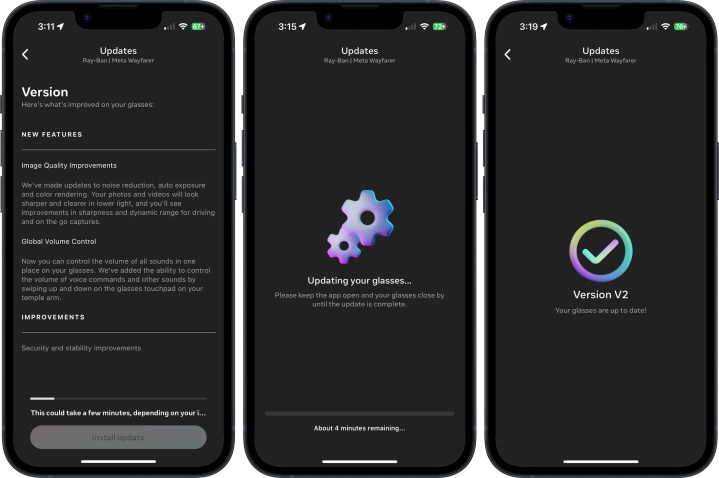
The Ray-Ban Meta smart glasses are just a few months into their life at this poin,t but have just graduated to Version 2.0 software. The update brings improvements to the camera imagery, as well as the volume controls.
Still missing, however, is any sign of the AI-powered image recognition, which will let the glasses tell you what you’re looking at, or potentially translate signs and whatnot. And a good many of us still don’t even see the option to get in on the beta testing. So stay tuned for that.

The official changelog reads thusly:
- Image quality improvements: We’ve made updates to noise reduction, auto exposure, and color rendering. Your photos and videos will look sharper and clearer in lower light, and you’ll see improvements in sharpness and dynamic range for driving and on-the-g0 captures.
- Global volume control: Now you can control the volume of all sounds in one place on your glasses. We’ve added the ability to control the volume of voice commands and other sounds by swiping up and down on the glasses’ touchpad on your temple arm.
- Improvements: Security and stability improvements.
The update takes a few minutes to install, so make sure things are charged up and you’re not in a hurry. And we’d recommend power-cycling the glasses via the power switch on the left stem once the bits and bytes have done their thing. We were having issues actually taking video and stills until we did that, but your mileage may vary.
As for whether the camera is greatly improved? That’ll take a little more testing.
The Ray-Ban Meta sunglasses start at about $300 and go up from there, depending on the style and lenses.
Editors' Recommendations
- The Meta Quest Pro and Quest 2 are getting big price cuts this month
- Can’t get the Windows 11 22H2 update? There could be a good reason why
- Razer Orochi V2 review: A gaming pedigree in a shockingly light package
- Razer’s new $50 Firefly V2 mouse mat lights up your desk in a rainbow of color




